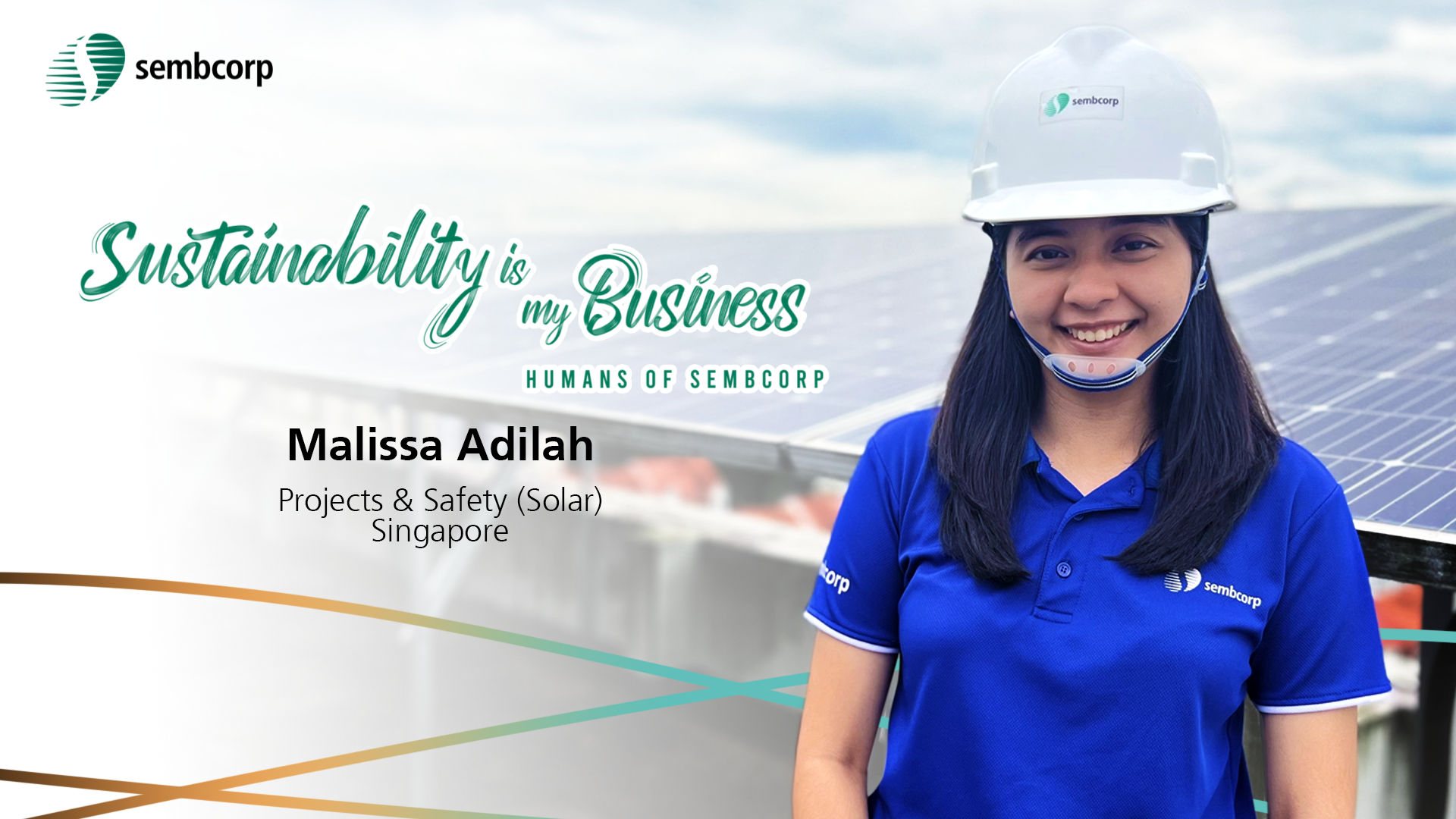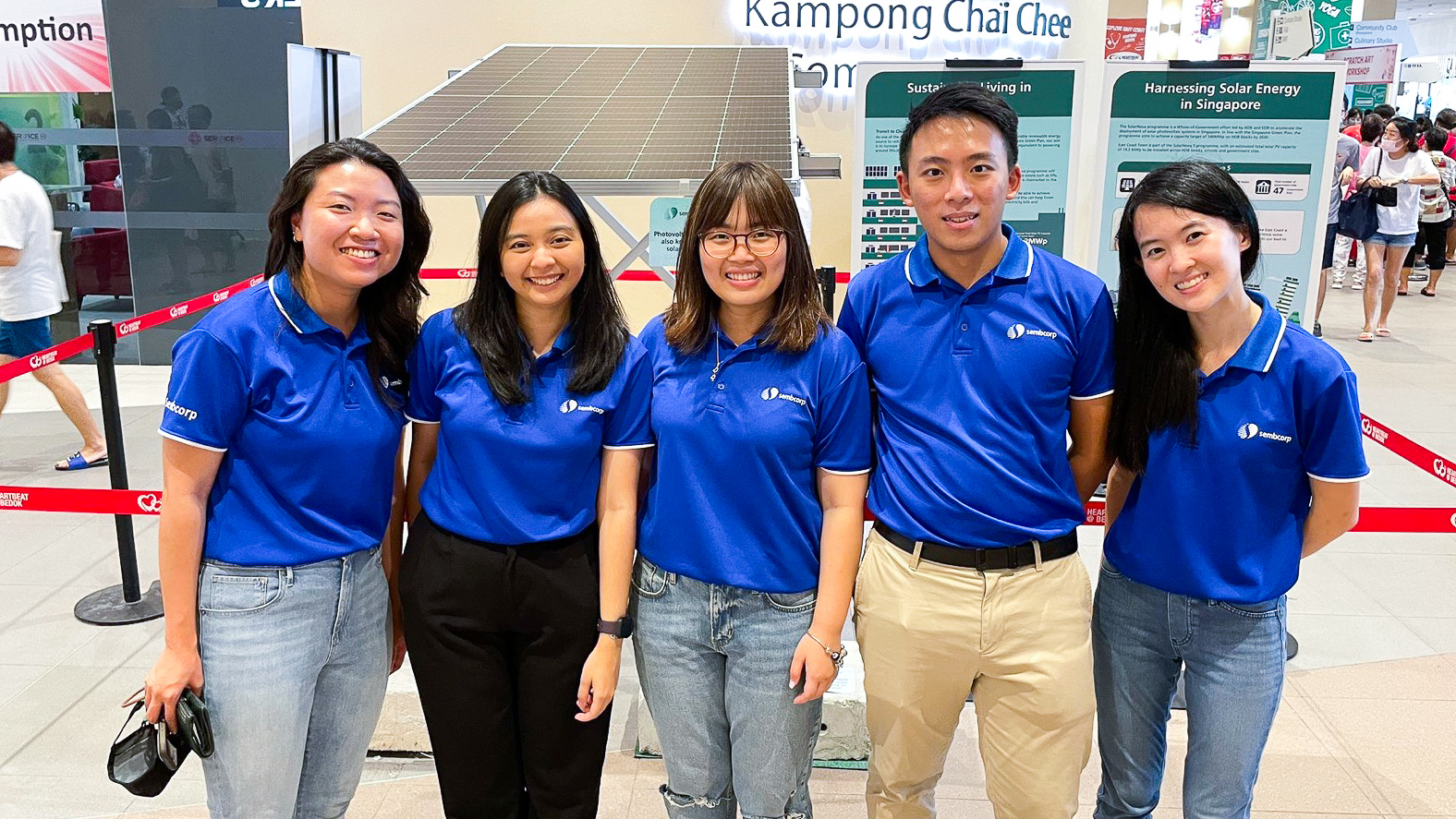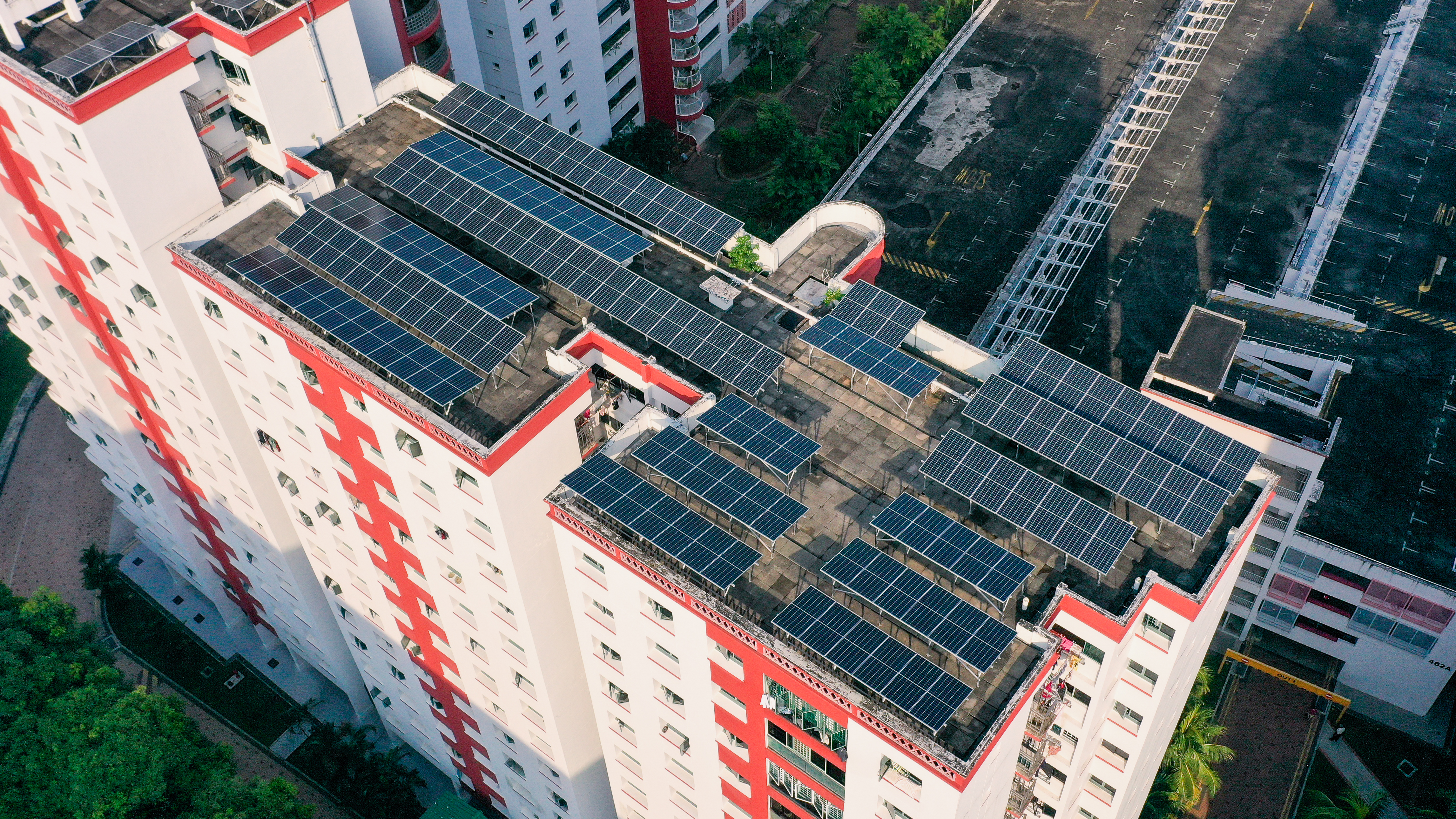
1. Tell us more about yourself.
My name is Malissa. I am a Project Engineer at Sembcorp Solar Singapore, and this is my first job since I graduated about a year ago. My interest in renewables grew during my time in polytechnic when I learnt how generating and consuming energy sustainably can make a difference. I chose Sembcorp because it is a leading solar provider in Singapore, and I knew there is a lot of opportunity for me to grow in this space.

My family and friends were surprised when they first found out that I became a project engineer; they had the impression that it can be too physically demanding for a petite woman like myself. But the physical demands are just a small part of what we do. As a project engineer, we are responsible for ensuring a project runs smoothly from start to end. We communicate regularly with our clients and work closely with the authorities to ensure compliance to building and safety requirements. All these require me to spend time on site to conduct spot checks and ensure everything is moving as planned. I am grateful to have supportive colleagues who motivate me to be better through their willingness to teach and share their expertise.

2. What is a project which you are working on that contributes to Singapore’s energy transition?
I am currently overseeing one of the SolarNova projects. SolarNova is a programme initiated by the Singapore government to accelerate the deployment of solar photovoltaic systems, and it has a capacity target of 540MWp on Housing Development Board (HDB) blocks by 2030.

Unlike most solar farms in open spaces, we need to consider the residents who are living in the area when designing and installing the solar panels on HDB blocks. As the flats may be of varying heights, reflective glare from the panels into homes can be a possible issue. To address this, the top surface of our solar modules are made of glass applied with an anti-reflective coating and are angled to minimise reflection into residents flat any time of the day. We also implemented innovative designs that can reduce noise from cutting and drilling works during installation.
For Singapore, the sun will continue to be the most promising source of renewable energy for electricity, and I am proud to be able to contribute to the Singapore Green Plan 2030 as we transit to a cleaner and greener future.
3. How can we help to build a sustainable future?
I believe that by being more conscious with what we buy and consume, we can live a happier and more fulfilling life. But this needs to start with the right understanding – we should understand what sustainability means to us, and how our everyday choices can impact the world. And by pursuing sustainability, we are also acknowledging that our environment is a limited resource. We should always adopt the right mindset as we find ways to go green and live within our own means!
